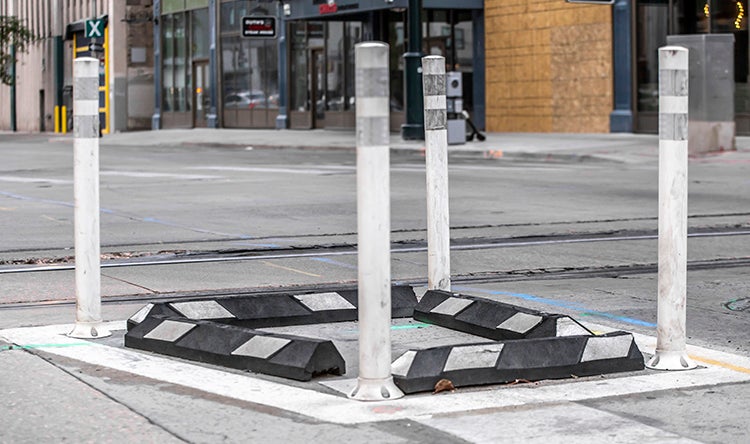15th and 17th Street Transit and Bike Improvements

15th and 17th Street Transit and Bike Improvements
Safety Improvements and Dedicated Lanes Improve Experience for Commuters and Visitors to Downtown Denver
Downtown Denver is growing quickly, with the city expecting 25,000 more residents and at least 40,000 more jobs downtown by 2040. To help address the demand on the transportation system, HDR was selected to design transit and safety upgrades to 15th and 17th Streets, in the heart of the city’s central business district.
New bus-only lanes on 1.5 miles of 15th and 17th Streets in downtown have improved travel times for riders, and enhanced safety features for bikes and pedestrians on 15th Street have increased bicycle usage. We were responsible for preliminary and final designs for improvements to the two corridors as well as construction services support. Design began in summer 2019 and both transit lanes were implemented by December 2019.
The work was part of the long-term Downtown Moves: Downtown initiative, meant to improve transit, bicycle and pedestrian travel, with the goal of increasing non-automobile options in the downtown core. HDR is also assisting the Denver Department of Transportation with this 20-year mobility plan and helped shift existing project scopes and budgets to prioritize the 15th and 17th Streets work as an early action item in the plan.
Dedicated Lanes and Increased Travel Time Reliability
Denver did not have existing standards for transit lanes so our team developed the design guidelines for downtown bus lanes. These standards encompassed street striping, signage, bike lane protective buffers and intersection safety treatments. The safety treatments also include a “bike box” that provides a protective barrier to increase visibility of cyclists entering the intersection. These intuitive elements give cyclists a designated lane, moving bikes out of traffic and off sidewalks to create a safer environment for all commuters.

The extra-wide designated transit lanes also allow buses to pass each other without having to weave in and out of general purpose traffic. They have shortened ride times for the 10,000 bus commuters each day and increased the travel time reliability during the peak traffic hour. The average commuter’s longest monthly trip is shortened by 4 minutes, which is nearly a 50% reduction.
Safety for all Commuters
Safety was a top priority with features including high visibility crosswalks, new vertical elements to reduce the likelihood of cars in the bike lane, and intersection elements that slow left-turning vehicles to increase pedestrian visibility.
The bicycle lanes are part of a larger network that connects into and through downtown, and transit connections are made clear and convenient. This is projected to increase bicycle and transit usage, leading to long-term air quality improvements.









